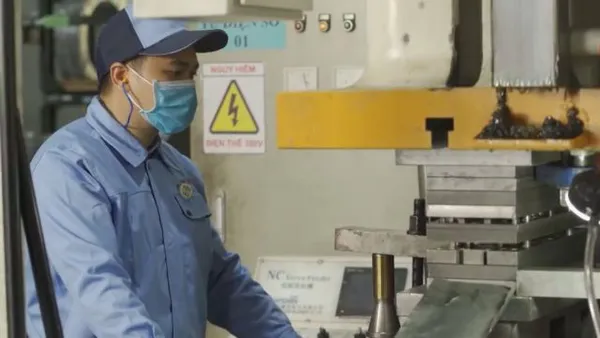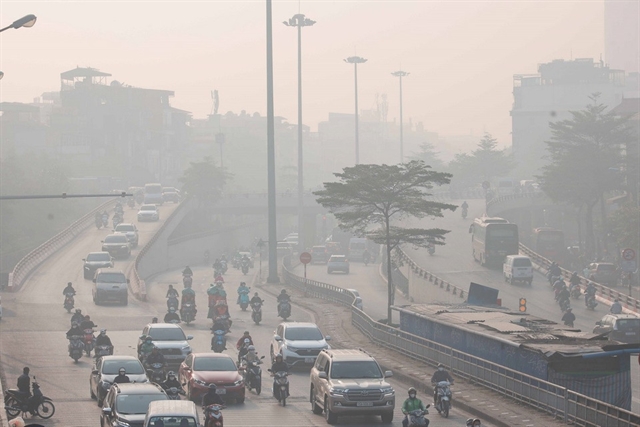 Economy
Economy


|
| Chương Dương Bridge in central Hà Nội on the morning of January 2, 2025. Air quality was reported with PM2.5 levels reaching 208.5 µg/m³, 41.7 times higher than the World Health Organisation's recommended guideline. — VNA/VNS Photo Hoàng Hiếu |
HÀ NỘI — Việt Nam is to introduce national emission standards for motorcycles and mopeds, with the first rollout expected in July 2027.
The new rules aim to curb rising air pollution in cities and help the country stay on track with its climate goals.
According to Hoàng Văn Thức from the Ministry of Agriculture and Environment, as emission limits for cars are already in place, now it’s time for motorbikes, still the most common mode of transport across the country, to be brought under similar regulations.
The proposed rules will apply gradually, depending on when a vehicle was manufactured. For motorcycles, the oldest models, those made before 2008, will follow the most lenient standard, Level 1. Bikes made between 2008 and 2016 will follow Level 2. Those from 2017 to mid-2026 fall under Level 3. From July 2026 onward, all new motorcycles must meet Level 4, the strictest standard.
Mopeds will follow a similar pattern but on a slightly different timeline. Those made before 2016 will meet Level 1. Models built from 2017 to mid-2027 will be held to Level 2. Anything produced after July 2027 must meet Level 4.
This effort supports Việt Nam’s larger commitment to cutting emissions and transitioning toward a green economy. At COP26, the country pledged to reach net-zero emissions by 2050. Transport is one of the main sectors contributing to urban pollution, so regulating it is key to that commitment.
Gradual implementation
The new rules won’t be implemented all at once. Hà Nội and HCM City will lead the way, starting emissions testing on July 1, 2027. A year later, other major cities like Hải Phòng, Đà Nẵng, Cần Thơ, and Huế will follow. The rest of the country will come on board by January 2030. Provinces can opt to adopt the standards earlier if they’re ready.
To ease the transition, there will be an 18-month grace period after testing begins in each location. During that time, drivers won’t face fines. Instead, authorities will focus on education and reminders. Once that period ends, non-compliant vehicles won’t be allowed on the roads, similar to the rules that already apply to cars.
The urgency is clear. From 2009 to 2023, Việt Nam’s vehicle fleet grew by 10 to 15 per cent each year. As of the end of 2023, there were more than 6.3 million cars and over 74 million motorcycles registered across the country.
This growth is one of the reasons why air quality in many cities has been getting worse, especially when it comes to dust and fine particles.
The cost is not just environmental but economic. The World Bank estimates that air pollution costs Việt Nam 5 to 7 per cent of its GDP each year. A study by Fulbright University Vietnam estimated economic losses from pollution at nearly US$10 to 12.5 billion in 2013. That number is likely even higher now.
In Hà Nội, for example, residents experienced 47 days of unhealthy air quality last year, while truly clean air days made up just 22 percent of the year. The new emissions policy won’t fix everything overnight, experts said, but it’s a major step toward cleaner air, healthier communities and a more sustainable transport system. — VNS